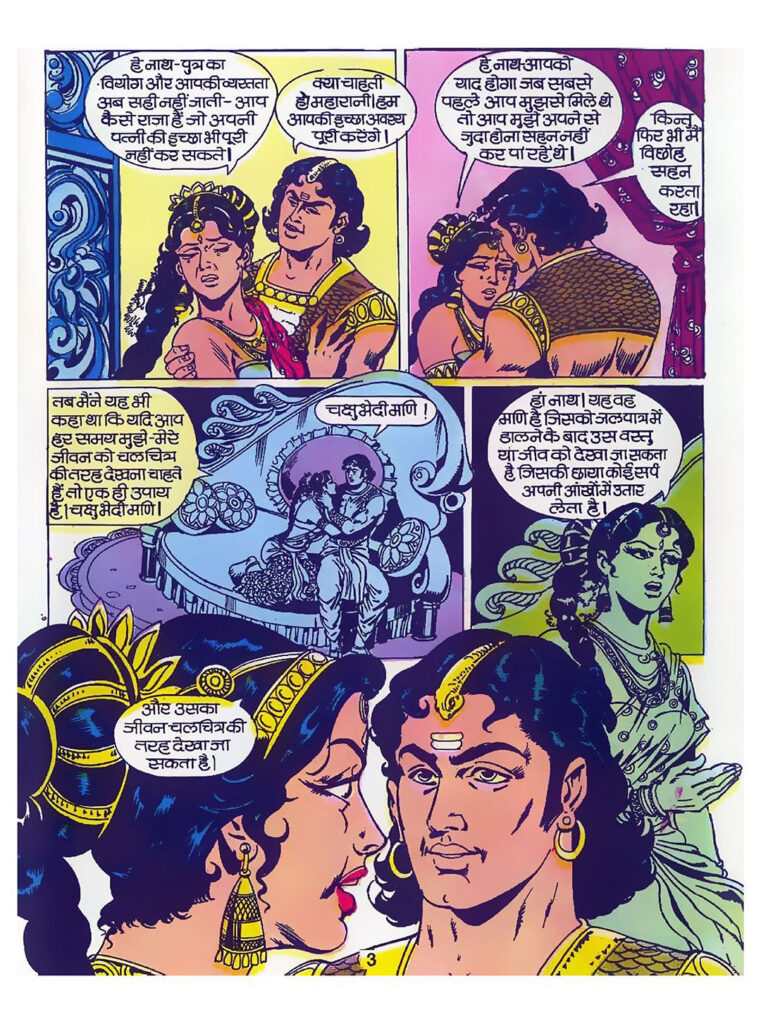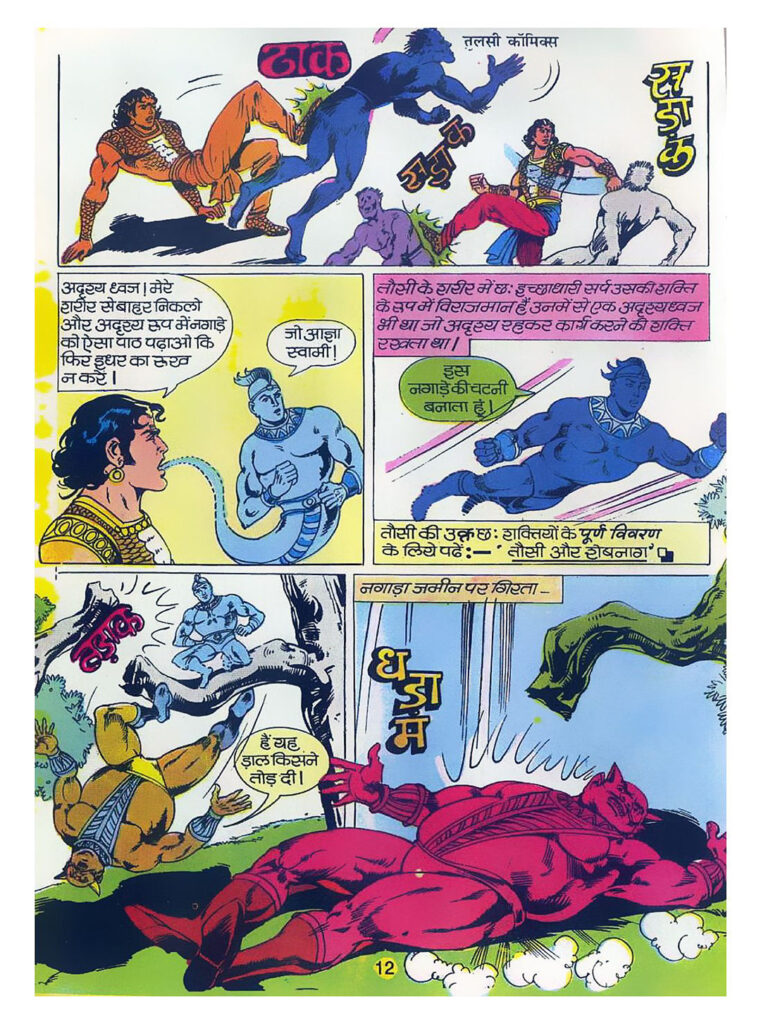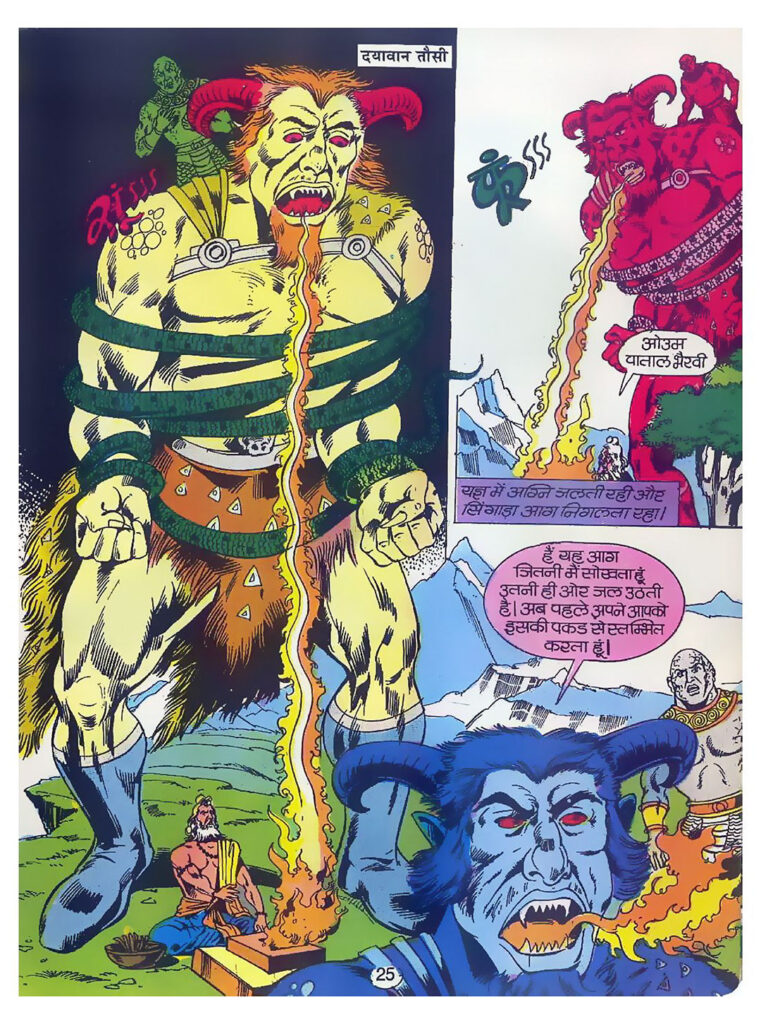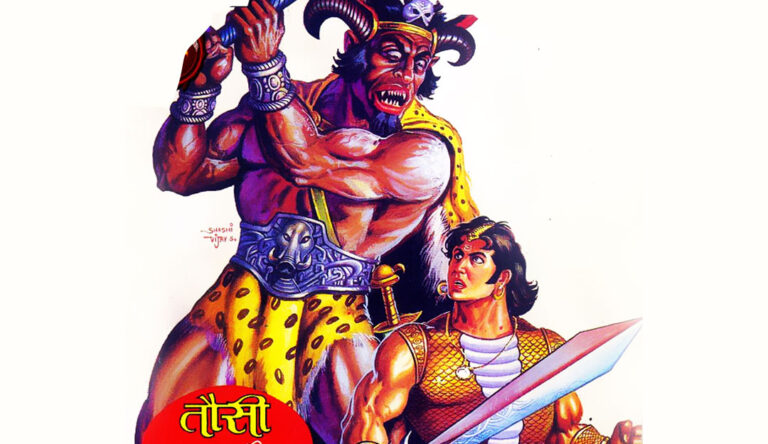Tulsi Comics, which gave us a unique and powerful hero like ‘Tausi’. Today we will do an in-depth review of Issue No. 343 of Tulsi Comics Digest, Dayawan Tausi, which not only highlights a particular aspect of Tausi’s character but also highlights the art, drawing, and storytelling values of the period.
The title Dayawan Tausi defines the original character of the hero in itself. Tausi, who is the emperor of Patal Sarpadesh and one of the most powerful wishful serpents in the universe, is known not only for his immense powers but also for his compassion and sense of justice. This comic is a test of this kindness, where Tausi strikes a balance between his personal mission and his duty to protect an innocent.
Triveni of love, separation, and duty
The story of the comic begins with a very emotional and personal scene. Tausi, the emperor of Patal Sarpadesh, takes out time from his administrative commitments to meet his wife, Queen Apsara, at her residence. Here storyteller Rituraj has beautifully depicted the human side of a powerful emperor. Apsara loves her husband, but she is sad due to the separation from her son. Her son, the future prince, is forced to live in an unknown place under the care of Nagbaba due to some curse or fate. A mother’s anguish and a wife’s expectation of her husband provide a poignant foundation to the story.

Apsara requests Tausi to bring the ‘Chakshubhedi Mani’. This is not an ordinary gem; its specialty is that by keeping it in a water vessel, the entire life of any person or creature whose shadow has been taken away by a snake can be seen like a movie. Apsara wants to see her son growing up while staying away from him and also wants to witness the bravery of her husband Tausi. This is a wish that any husband would like to fulfill.
But this gem is embedded in the throne of Patal Bhairavi and is almost impossible to obtain. The protector of this path is Daityaraj Singada, a cruel and powerful demon. Tausi vows to make this impossible task possible for his wife’s happiness.
The next stop in the story takes Tausi to Nagbaba, who is in the role of a teacher and mentor. Nagbaba tells Tausi about the crisis of ‘Mrityu Yoga’ looming over his son and also explains why his naming ceremony has not been performed yet and why he has been kept away from everyone. He also alerts Tausi to the difficulties of this journey, but Tausi remains firm in his decision.

The exciting journey of Tausi begins from here. He has to reach Himesh Mountain. Using his wishful powers, he takes the form of a snake and travels miles. Reaching Mount Himesh, he experiences a wonderful and sacred environment, where sages and seers are engrossed in penance. Then his attention goes towards a Mahatma who is performing a yagya, but that yagya is being disrupted by demons. The messenger ‘Nagada’ of the demon king Singada defiles the yagya by putting bones in its fire.
It is here that the title of the story ‘Dayawan Tausi’ becomes meaningful. Despite his personal quest and promise to his wife, Tausi cannot remain silent after seeing the atrocities being committed on an innocent ascetic. He comes forward to protect Dharma and confronts Singada’s entire army alone. From here, the comic enters a long and detailed sequence of action and feats. Tausi makes a wonderful display of his wishful powers, physical strength, and combat skills. He alone outweighs hundreds of demons.
The ascetic Mahatma is extremely pleased with this selfless act and kindness of Tausi. He recognizes Tausi and promises to help him achieve his destination, i.e., ‘Chakshubhedi Mani’. The comic ends with an exciting twist, where the Mahatma tells Tausi the secret of obtaining the gem, and the next issues increase the curiosity of the readers by indicating ‘Tausi’s gravity power’.
Heroes, villains, and supporting characters
Tausi’s character in this comic is multifaceted. He is an ideal king who is dedicated to his kingdom. He is an ideal husband who can go to any extent for his wife’s happiness. And above all, he is a pious and merciful hero who stands up against injustice, even if he has to stray from his path. His being ‘kind’ is not his weakness but his greatest strength.
Apsara is the emotional axis of the story. Her character is not that of an ordinary queen; she herself is a powerful wishful serpent. Her sorrow and her desire are what set this whole story in motion. She is Tausi’s inspiration.
Nagbaba represents the classic character of the ‘Guide’ or ‘Mentor’. He is a repository of knowledge and reveals the secrets of the story, giving depth to the plot.
Singada is a traditional but influential villain. His purpose is only to destroy and hinder the works of righteousness. His physical appearance, toughness, and huge army make him a worthy rival for Tausi.
Art and portraiture
This comic has been illustrated by Rahi Kadam and Darshana Thigley. The art style carries the unique identity of the comics of that period. The lines are bold and clear, giving dynamism to the action scenes. The characters’ expressions are depicted simply but effectively. Tausi’s physique, sharpness in his eyes, and Singada’s sinister appearance are both memorable.

The use of colors is lively. The use of bright and primary colors was a hallmark of the printing technology of the time, which may seem a bit crude to readers of today’s digital age, but these colors gave the comics of that period their unique charm. The artistic use of sound-effect words like ‘Dhadam’, ‘Crack’, ‘Sadak’ in war scenes brings life to the action. The layout of the panels is straightforward and simple, making the story easy to understand. Overall, the artwork does complete justice to the story and draws readers into that fantasy world.
Writing and Dialogue: The melody of pure Hindi
Writer Rituraj’s writing is the soul of this comic. The dialogues are written in pure and literary Hindi, giving a completely different experience from today’s colloquial comics. The use of words like ‘Prananath’, ‘Vatsa’, ‘Yagyagni’, ‘Dushta’, ‘Tapasya’ provides a mythological and serious atmosphere to the story. The dialogues are short, pithy, and well-suited to the characters. The pace of the story is fast; it starts with emotional scenes and quickly moves towards action and adventure, keeping readers engaged till the end.
Lessons of duty and compassion
Dayawan Tausi is an action-adventure comic as well as a confluence of deep moral messages that consider duty paramount, as Tausi plays both the role of husband and protector of righteousness well. This comic establishes mercy as the greatest virtue, showing that true heroism lies in the defense of the weak, not just in the display of power. Additionally, the distance from the nymph’s son and the arduous journey for Tausi’s wife both highlight the renunciation inherent in love. Ultimately, this story proclaims the triumph of righteousness, ensuring the ultimate victory of religion and good in the eternal struggle of good and evil.
Conclusion: A memorable and collectible issue
Dayawan Tausi is one of the best issues of Tulsi Comics. It’s a complete package that includes emotions, secrets, adventure, action, and a strong moral message. This comic takes us back to a period when stories used to be simple but impressive and the protagonists were idealistic and virtuous, not just powerful.
This comic is not only a nostalgic trip for old comic fans but also an excellent example to show the new generation of readers how deep and rich the roots of Indian comics are. If you are a fan of the mix of Indian superhero fiction and mythology, Dayawan Tausi is a must-read comic. It reminds us that a hero’s true identity is not determined by his supernatural powers, but by his kind heart.
